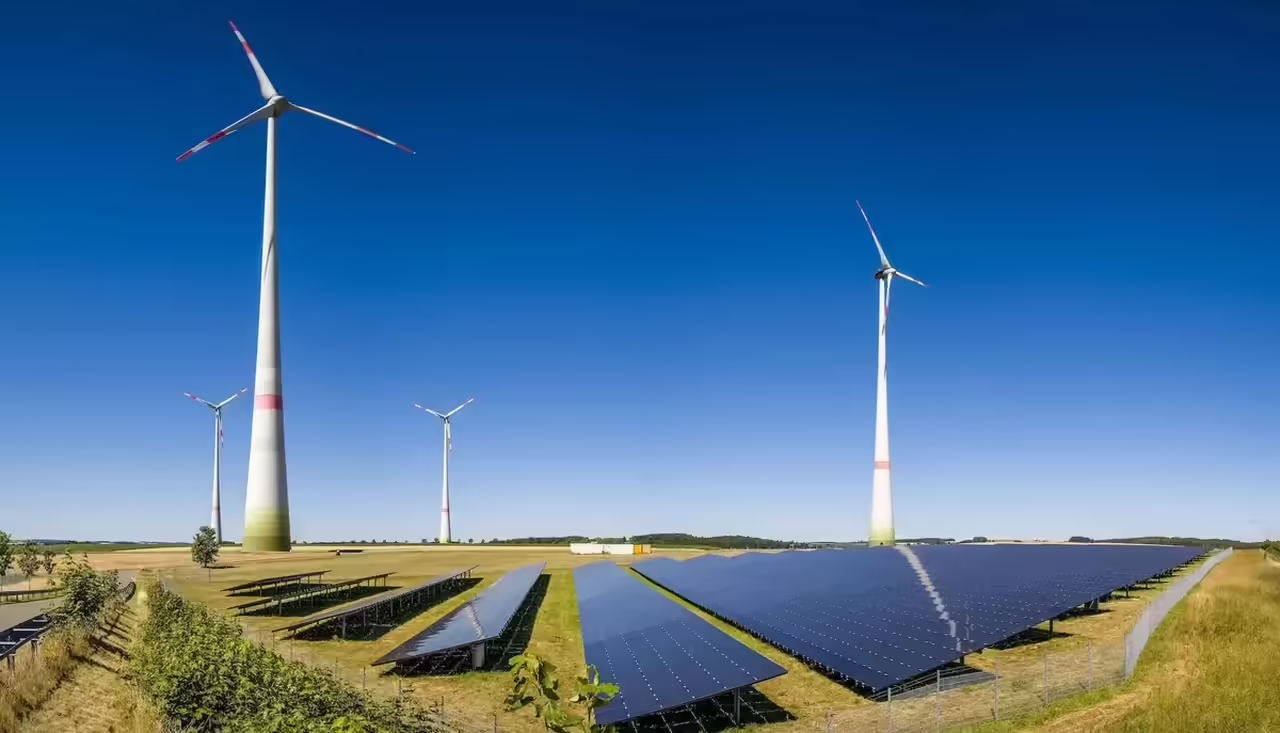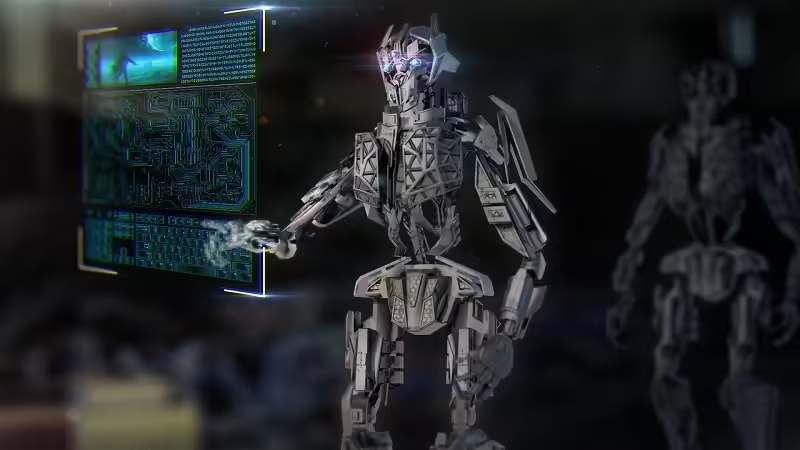
In recent years, a sweeping transformation has been taking place in the field of renewable energy, fueled by advancements in technology. This phenomenon, often referred to as the “Energy Revolution,” is reshaping the way we generate, store, and distribute clean energy. As the world grapples with the pressing challenges of climate change and sustainable development, this revolution couldn’t have come at a more crucial time.
Harnessing the Power of the Sun
Solar energy, once considered a niche technology, has now become a mainstream power source thanks to technological breakthroughs. Photovoltaic cells have become more efficient and affordable, allowing solar panels to convert sunlight into electricity with remarkable efficiency. Emerging technologies like perovskite solar cells offer even greater potential for efficiency gains. Furthermore, smart grid systems and energy storage solutions enable excess solar energy to be stored for later use, ensuring a consistent power supply regardless of weather conditions.
Unleashing the Wind’s Potential
Wind power has also witnessed a tremendous transformation, with towering wind turbines becoming a ubiquitous sight across landscapes. Advanced aerodynamics and materials have made modern wind turbines more efficient and capable of generating substantial amounts of electricity. Additionally, machine learning and predictive analytics are being integrated into wind farm operations, optimizing turbine performance and maintenance schedules.
Tapping into the Energy Beneath the Earth
Geothermal energy, often overshadowed by solar and wind, is experiencing a resurgence due to technological advancements. Enhanced geothermal systems (EGS) are unlocking the potential of geothermal reservoirs by injecting water into hot rock formations and extracting the produced steam to generate electricity. This technology has the potential to provide a consistent and reliable source of clean energy, regardless of weather conditions.
The Rise of Energy Storage Solutions
One of the most critical challenges of renewable energy has been its intermittent nature. However, breakthroughs in energy storage technologies are mitigating this issue. Lithium-ion batteries, which have revolutionized the portable electronics industry, are now being deployed on a grid scale to store excess energy during peak generation periods for later use. Researchers are also exploring alternative materials and designs to create more efficient and environmentally friendly storage options.
The Role of Digitalization and Data Analytics
The integration of digital technologies is another driving force behind the Energy Revolution. Internet of Things (IoT) sensors and data analytics are being employed to monitor energy production, consumption patterns, and equipment performance in real-time. This data-driven approach enhances the efficiency of renewable energy systems by enabling predictive maintenance, optimizing energy distribution, and reducing downtime.
The Path Ahead
While the Energy Revolution has made remarkable strides, challenges remain. The integration of renewable energy sources into existing grids requires careful planning to ensure stability and reliability. Policy and regulatory frameworks must also adapt to accommodate the evolving energy landscape.
Harnessing the Power of the Sun: Technological Advances in Solar Energy
Solar energy, once seen as a futuristic and costly endeavor, has now become a driving force in the global shift towards sustainable energy solutions. Recent advancements in solar technology have paved the way for a more efficient, affordable, and accessible solar energy landscape. These breakthroughs are not only reshaping the energy sector but also holding the potential to revolutionize how we power our world.
Photovoltaic Innovation
At the heart of the solar energy transformation lies photovoltaic technology, which enables the conversion of sunlight directly into electricity. Over the years, photovoltaic cells have undergone remarkable improvements in efficiency and affordability. Traditional silicon-based cells have become more streamlined, while emerging materials like perovskite have shown exceptional promise in achieving even higher conversion rates. These advancements are making solar panels more cost-effective and capable of generating more electricity from the same amount of sunlight.
Thin-Film Solar Solutions
Thin-film solar technology is another exciting frontier in the solar energy landscape. Thin-film solar cells are lighter, flexible, and can be integrated into a variety of surfaces, including building materials. This versatility opens up new possibilities for solar energy integration in urban environments, where space might be limited. Moreover, these thin-film technologies can operate efficiently even under low-light conditions, expanding the range of locations suitable for solar energy generation.
Concentrated Solar Power (CSP)
Concentrated Solar Power, or CSP, takes a different approach by focusing sunlight onto a small area to generate heat. This heat is then used to drive turbines and generate electricity. CSP systems incorporate mirrors or lenses to concentrate sunlight, allowing for efficient heat generation even during cloudy periods or at night. Advanced CSP designs, such as parabolic troughs and solar power towers, are increasing efficiency and reducing costs, making CSP a viable option for large-scale energy production.
Bifacial Solar Panels
Bifacial solar panels are designed to capture sunlight from both sides of the panel, effectively increasing their energy generation capacity. These panels can capture reflected sunlight from surrounding surfaces, further boosting their overall efficiency. As a result, bifacial panels are gaining traction in various applications, including solar farms and rooftop installations.
Energy Storage Integration
One of the challenges of solar energy is its intermittent nature due to changing weather conditions. However, advancements in energy storage technologies are changing the game. Battery storage solutions, often coupled with solar installations, store excess energy during peak production hours and release it when demand is high or solar generation is low. This ensures a consistent power supply and maximizes the utilization of solar energy.
The Future of Solar Energy
As technological advancements continue to shape the solar energy landscape, the potential for widespread adoption and integration grows exponentially. Solar energy is no longer confined to specialized installations; it’s becoming an integral part of our everyday lives. From powering homes and businesses to fueling electric vehicles and beyond, the sun’s energy is being harnessed in increasingly innovative ways.
Riding the Wind: How Technology is Boosting Wind Energy Efficiency
In the realm of renewable energy, wind power has emerged as a formidable player, and its prominence continues to grow thanks to rapid technological advancements. From towering wind turbines that dot landscapes to sophisticated control systems, the marriage of technology and wind energy is driving unprecedented levels of efficiency and reliability. Here’s how innovative technologies are propelling wind energy forward on the path to a cleaner and more sustainable future.
Turbine Design and Aerodynamics
Modern wind turbines are a testament to engineering ingenuity. With advancements in materials science and aerodynamics, turbines have become larger, more efficient, and capable of harnessing greater amounts of energy from the wind. Aerodynamic improvements, such as curved blades designed to minimize drag and optimize lift, have significantly boosted turbine performance. Furthermore, advances in manufacturing techniques have made it possible to produce these advanced components at a larger scale and lower cost.
Offshore Wind Farms
The expansion of wind energy into offshore environments is revolutionizing the industry. Offshore wind farms benefit from consistent and stronger winds, leading to more stable energy generation. Innovative floating platforms and foundation designs allow turbines to be installed in deeper waters, opening up vast areas for potential wind energy projects. Moreover, these offshore installations are often located closer to populated areas, reducing energy transmission losses.
Smart Control and Monitoring Systems
The integration of smart technologies into wind farms has revolutionized their operation and maintenance. Sophisticated control systems use real-time data to optimize the alignment of turbine blades with prevailing wind direction, ensuring optimal energy capture while minimizing stress on the components. Remote monitoring and predictive maintenance enable operators to identify and address potential issues before they lead to downtime, maximizing the overall lifespan of turbines.
Grid Integration and Energy Storage
Efficiently integrating wind energy into existing power grids is crucial for a stable and reliable energy supply. Advanced grid management technologies allow for seamless integration of variable wind power by balancing supply and demand. Energy storage solutions, such as large-scale batteries, enable excess wind energy to be stored during periods of high generation and released when demand peaks. This mitigates the intermittent nature of wind energy and enhances grid stability.
Data Analytics and Machine Learning
The data-rich nature of wind energy systems provides fertile ground for data analytics and machine learning. These technologies analyze vast amounts of operational data to identify patterns, optimize performance, and predict maintenance needs. Machine learning algorithms continually refine turbine control strategies, improving efficiency and adapting to changing wind conditions.
Environmental Considerations
As wind energy expands, so does the need to mitigate potential negative environmental impacts. Advanced technologies are addressing concerns such as bird collisions and noise pollution. Radar systems and machine learning algorithms are being used to detect bird movements and adjust turbine operations accordingly. Additionally, quieter turbine designs and careful placement help minimize noise disturbances for nearby communities.
Green Innovation: How Technology is Revolutionizing Renewable Energy Generation
In the ongoing quest for sustainable solutions, technology has emerged as a pivotal force driving the transformation of renewable energy generation. The convergence of innovation and environmental consciousness has given rise to a new era of green energy production, setting the stage for a more sustainable future. Here’s a glimpse into how technology is spearheading a revolution in renewable energy generation.
Enhancing Efficiency in Solar Power
Solar power, a cornerstone of renewable energy, has experienced substantial advancements thanks to technological breakthroughs. Solar panels equipped with advanced photovoltaic cells have seen improved efficiency and affordability. Emerging materials, like perovskite, hold the promise of even higher energy conversion rates. Additionally, tracking systems that follow the sun’s trajectory throughout the day maximize energy capture, while AI-powered algorithms optimize panel angles for peak performance.
Maximizing Wind Energy Potential
Wind energy’s trajectory has also been reshaped by technology. Modern wind turbines, with their sleek designs and advanced materials, generate more electricity from wind energy than ever before. Innovations in turbine blade design and aerodynamics have led to increased efficiency, while digital twin simulations enable engineers to fine-tune designs for optimal performance. Furthermore, remote sensing technologies help identify wind-rich locations for optimal turbine placement.
Tapping into Ocean Power
Marine energy, encompassing tidal and wave power, presents a largely untapped resource. Technological strides are being made in harnessing the immense energy potential of the oceans. Wave energy converters, inspired by biomimicry, mimic the motion of ocean waves to generate electricity. Tidal energy projects utilize underwater turbines to convert tidal flows into power. These technologies represent a promising frontier in renewable energy generation.
Harvesting Energy from Vibrations
Innovative technologies are exploring unconventional methods of energy harvesting. Piezoelectric materials, for instance, can generate electricity from mechanical vibrations, such as foot traffic or vehicle movement. Integrating these materials into infrastructure like roads and sidewalks can contribute to energy generation while demonstrating the fusion of technology and sustainability.
Hydrogen: The Fuel of the Future
Hydrogen has emerged as a versatile energy carrier with zero emissions potential. Advances in electrolysis technology allow for efficient extraction of hydrogen from water using renewable energy sources. Fuel cells then convert hydrogen back into electricity, emitting only water vapor. Hydrogen holds promise for storing excess renewable energy and fueling various sectors, from transportation to industry.
The Digital Energy Landscape
The digital transformation is a key enabler of the renewable energy revolution. The Internet of Things (IoT) connects renewable energy systems, allowing for real-time monitoring and control. Data analytics and AI algorithms process vast amounts of information to optimize energy production, consumption, and distribution. Blockchain technology, meanwhile, ensures transparency and traceability in energy transactions.
Decentralized Energy Systems
Technology empowers the shift from centralized to decentralized energy systems. Microgrids, powered by renewable sources and equipped with smart energy management systems, provide resilient and reliable energy solutions, especially in remote areas or during emergencies. Peer-to-peer energy trading platforms enable individuals to exchange surplus energy directly, fostering a community-driven energy ecosystem.







